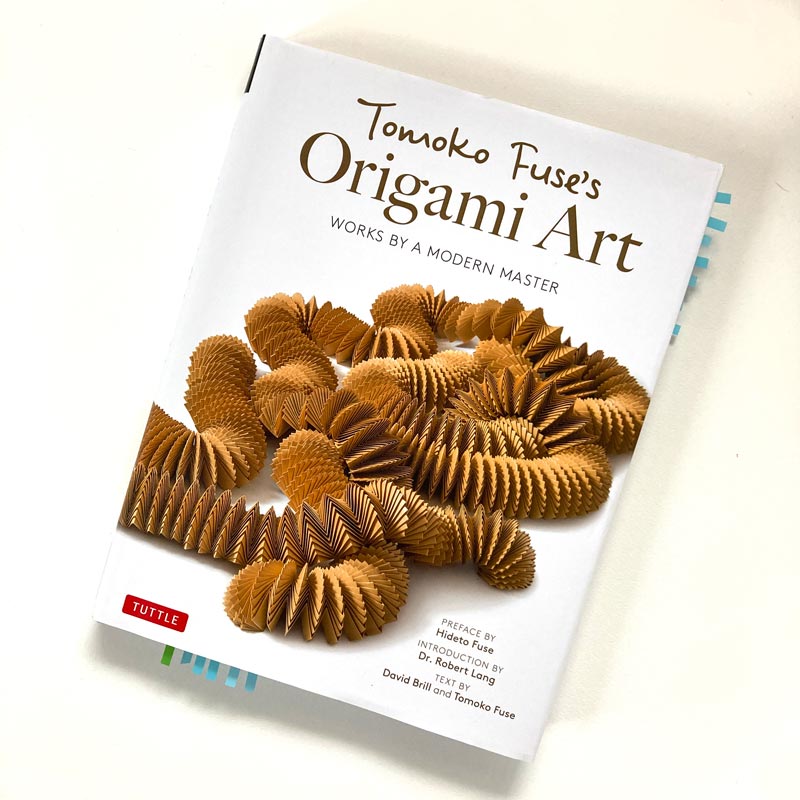If you, or someone you know, loves origami, or paper as an expressive artistic medium, Tomoko Fuse’s Origami Art: Works by a Modern Master is the perfect book to add to a personal library, or to give as a gift. In this book, we find a remarkable collection of Tomoko Fuse‘s impressive work.
Tomoko Fuse’s Origami Art can serve two purposes:
- If you practice origami, this book is a treasure trove, especially for aspiring origami designers.
- As a folding guide, it is suitable for people who’ve had previous experience with origami.
- For the beginner, it offers a wide-ranging exploratory view of origami’s many possibilities.
- If you love art, this book is a beautiful example of the limitless ways of artistic expression using paper as a medium.
Disclosure: This post contains affiliate links through which I receive a small commission. No additional cost to you. Thank you for your support. Read more here.
In this post and video, I’ll share with you an overview of the book and you will see why I love it and why I think that it should be in the library of any person who wants inspiration and mastery with origami.
Book Content
SECTION 1: The book starts with four sections with the first written by Tomoko Fuse. In it, she shares what fascinates her about origami and her joy of uncovering a new world through a brief series of hand gestures as she manipulates paper.
SECTION 2: Hideto Fuse–aesthetics researcher, no relation––discusses the transformation from a two-dimensional to a three-dimensional shape as an artistic expression. He discusses the qualities of Tomoko Fuse’s art and draws a parallel between it and the work of several 20th-century artists. Fuse goes on to describe how origami goes beyond being a series of paper-folding gestures and is positioned between the twin spheres of art and science.
SECTION 3: Robert Lang highlights the scope of different origami genres Tomoko Fuse has explored.
SECTION 4: Tomoko Fuse’s biography describes picking up origami during a hospital stay at the age of seven, and how her interest in origami developed into a prolific career as an origami artist.
The next part of the book is made by five chapters featuring different techniques and origami genres.
Chapter 1: CONSTRUCTING WITH THE KNOT Features the creation of knots with strips of paper to make pentagonal shapes, star-shaped and floral patterns.
Chapter 2: TESSELATIONS Highlights how tessellations are a way to create motifs and patterns with a single piece of paper.
Chapter 3: INFINITE FOLDS Illustrates shapes made using fractal folds.
Chapter 4: REPETITIVE FOLDS Features tubular and multilayered shapes.
Chapter 5 -THE LIGHT BEHIND THE FOLDS Brings to our attention the interaction between light and shadow as seen on folded paper.
METHODS AND INSTRUCTIONS After the previous chapters––which are filled lovely and inspiring photographs––we are presented with:
- Folding guidance, suggestions, and ideas on how to fold many of the shapes featured throughout the book.
- Diagrams and plenty of crease patterns as an incentive and invitation to explore paper folding in a very imaginative way.
Tomoko Fuse’s Origami Art will leave you with inspiration, joy, paper folding possibilities, and a clear idea why Tomoko Fuse has been called the Queen of Origami. I highly recommend it!
Purchase Tomoko Fuse’s Origami Art: Works by a Modern Master on Amazon.
Disclosure: This post contains affiliate links through which I receive a small commission. Purchasing through them does not represent an additional cost to you. Thank you for your support. Read more here.






This is going on my wish list now! Thank you!
Thanks for the book review.